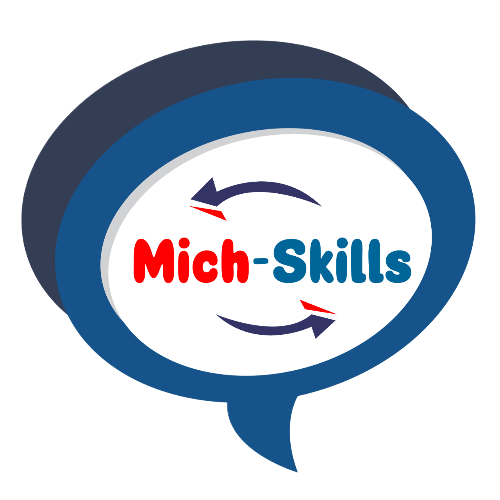Learning Contents
LEARNING OUTCOME NO. 3 – PREPARE BASIC INSTRUCTIONAL MATERIALS
Competency-Based Learning Materials (CBLM)
CBLM is developed by the trainer. Usually, this is developed by the TM1 trainee as his output in the course. It is a normal course that the trainee will choose the qualification title of which he has a national certificate. He got certified in that qualification, now he wants to be a trainer. For that reason, he is enrolled in TM1.
CBLM is a necessary consequence of Session Plan. Do not start writing the CBLM unless you are done with the Session Plan. Session Plan is a map to guide you what materials and methods to use in the conduct of your training delivery. CBLM comprises the learning materials you need to have in providing instruction. Likewise, the CBLM provides specific instructions on what to do with the materials in the training.
CBLM is developed for each competency or module that the qualification consists of. Thus, if the qualification title has five competency units or modules, there should be five CBLM that will be developed.
Contents of the CBLM
Cover Page
The Cover Page states what Sector is your Qualification Title; your Qualification Title; the Unit of Competency for which you prepare the CBLM; and the Module Title. As we mentioned, Module Title is the same as Unit of Competency but with the first word ending with –ing.
The Footer
The Footer shows the author of the CBLM, the date it was developed, its Document No., and the name of the issuer later when it is already in use for training. The Qualification Title likewise appears in the footer, and the name of the training institution.
How To Use CBLM
This part of the CBLM describes the unit of competency for which it is about. This is the content of the Unit Descriptor found in the Training Regulations of the Qualification Title. It has made some reference to the previous training activities such as identifying learner’s requirements, preparing session plan, preparing basic instructional materials and organizing learning and teaching activities. This clearly establishes the connection between the preceeding activities and CBLM.
Recognition of Prior Learning
Recognition of Prior Learning is emphasized to be part of pre-assessment activity. You are encouraged to disclose your previous trainings to your trainer. If the trainer finds that your prior trainings or experience are adequate, you may be asked to skip the learning outcomes or competency units concerned.
Learner’s Diary
At the end of the CBLM is a Learner’s Diary. This records training events, tasks done, and other details relevant to the learning activities.
The CBLM is explained to be a learning support to acquiring knowledge by independent study of the trainees with minimal guidance by the trainer, if any.
List of Competencies
This is a matrix listing the competencies of the qualification title. Its competency is assigned with a code provided by the TR of the qualification title.
Module Content
The main part of the CBLM is the Module Content. On top of the page are the following: Unit of Competency, Module Title, Module Descriptor, Nominal Duration, and Learning Outcome. The information of these topics are found in the Session Plan.
Assessment Criteria
Learning outcomes have their respective assessment criteria. After the enumeration of the learning outcomes of the unit of competency which is the subject of the CBLM, follows the enumeration of the assessment criteria listed under each of the learning outcomes.
Learning Outcome Summary
In Learning Outcome Summary, each of the learning outcomes of the unit of competency is tackled one after the other. Thus, Learning Outcome No. 1, Learning Outcome No. 2, Learning Outcome No. 3, and so on. The topic of each of the learning outcomes is written after the serial number. This is followed by the enumeration of contents. Then, the Assessment Criteria of each of the Learning Outcomes is copied here. After that, Conditions follow. This is the listing of equipment tools and materials that will be used in the Learning Outcome. Next is the enumeration of training methods, followed by the assessment method. Usually, assessment methods consist of writing test, performance test, oral questioning.
Learning Experiences
The learning experiences in each learning outcomes are described. They comprise learning activities described in one column and special instructions in another column. The learning activities is a detailed description of the activities enumerated in the Session Plan Meanwhile, special instructions provide directions on what to do in the learning activities. Thus, learning activities are the ‘what’ and special instructions are the ‘how’.
Two Main Activities in Module
There are two main activities in Module: Information Sheet, and Task/Job Sheet.
Information Sheet
Information Sheet is a learning material about each of the contents enumerated for each learning outcome. The trainee reads the information sheet and answers questions found at the end of the reading. He then compares his answers to the answer key which is also provided. The information sheet must not be longer than five pages of texts and graphics, excluding the questions and the answer key.
Each Information Sheet is identified with a serial number consists of three numbers separated by a dot (.) and dash (-). The first number represents the chronological number of the competency unit counting to begin at the first competency unit that appears after the term Core Competencies in the TR (Training Regulations (TR). The number in the middle is the chronological number of the Learning Outcome in the Competency Unit. Finally, the last number is the count of the Information Sheet prepared in each learning outcome.
